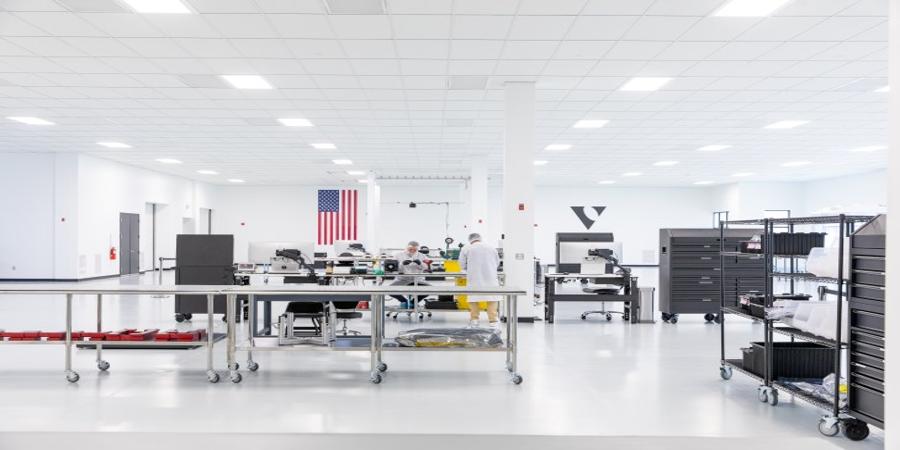Defense-focused space technology startup True Anomaly has received key permits from regulators that will allow it to demonstrate imaging and rendezvous capabilities on-orbit for the first time.
The two authorizations — from the National Oceanic and Atmospheric Administration (NOAA) and the Federal Communications Commission (FCC) — give the company the greenlight to perform non-Earth imaging and to demonstrate in-space rendezvous proximity operations, respectively. True Anomaly is planning on executing these capabilities using two of its “autonomous orbital vehicle” spacecraft, which the company calls Jackals, during a mission early next year.
The 275-kilogram Jackal spacecraft will launch aboard SpaceX’s Transporter-10 rideshare mission, which is currently scheduled to launch no earlier than February 2024. True Anomaly had previously been targeting a ride on Transporter-9, which is launching in October, but CEO Even Rogers told TechCrunch that they decided to move to a slightly later launch date after experiencing some supply chain issues.
“Sometimes there are pressures when you’re building new systems that you experience across the supply chain,” he said. “We were subjected to some of those delays and then it just got a little tight.”
The startup also announced that it had opened its first factory, a 35,000-square-foot facility called “GravityWorks,” in Centennial, Colorado. The new facility will be able to produce a spacecraft every five days, thanks to a manufacturing approach that’s similar to how automobiles are assembled.
“We’re not trying to commoditize spacecrafts,” he said. “There’s some phenomenal companies out there that are just trying to make spacecraft less expensive and fast, but we’re really focused on a national security space and securing the space domain from threats.”
True Anomaly, founded by a quartet of ex-Space Force members last year, is looking to furnish the Pentagon with defensive technology, including an “autonomous orbital vehicle” the company calls Jackal, to protect American assets in space and conduct reconnaissance on adversary spacecraft. The company has found major traction for its tech, raising around $30 million in funding so far, including a $17 million Series A that closed earlier this year.
In a previous interview with TechCrunch, True Anomaly CEO Even Rogers described an “information asymmetry” between the U.S. and its adversaries in space; the company wants to close that gap, by building spacecraft that can rendezvous with other orbital objects and capture images up close.
The company is also planning to provide virtual training and using the Jackal on-orbit as a real-life training system for U.S. warfighters. Last month, True Anomaly debuted a digital and an “on-orbit range” service, which will be able to realistically replicate threats and allow users to train and test tactics.
Eventually, Rogers said the company is looking to roll out more hardware lines and have “potentially hundreds” of spacecraft in every orbit, including cislunar orbit.
Source @TechCrunch



